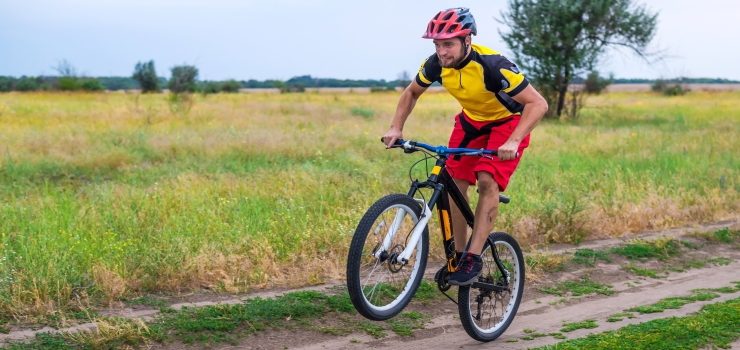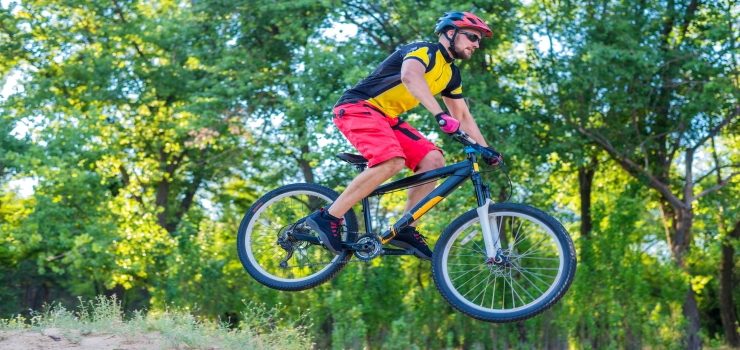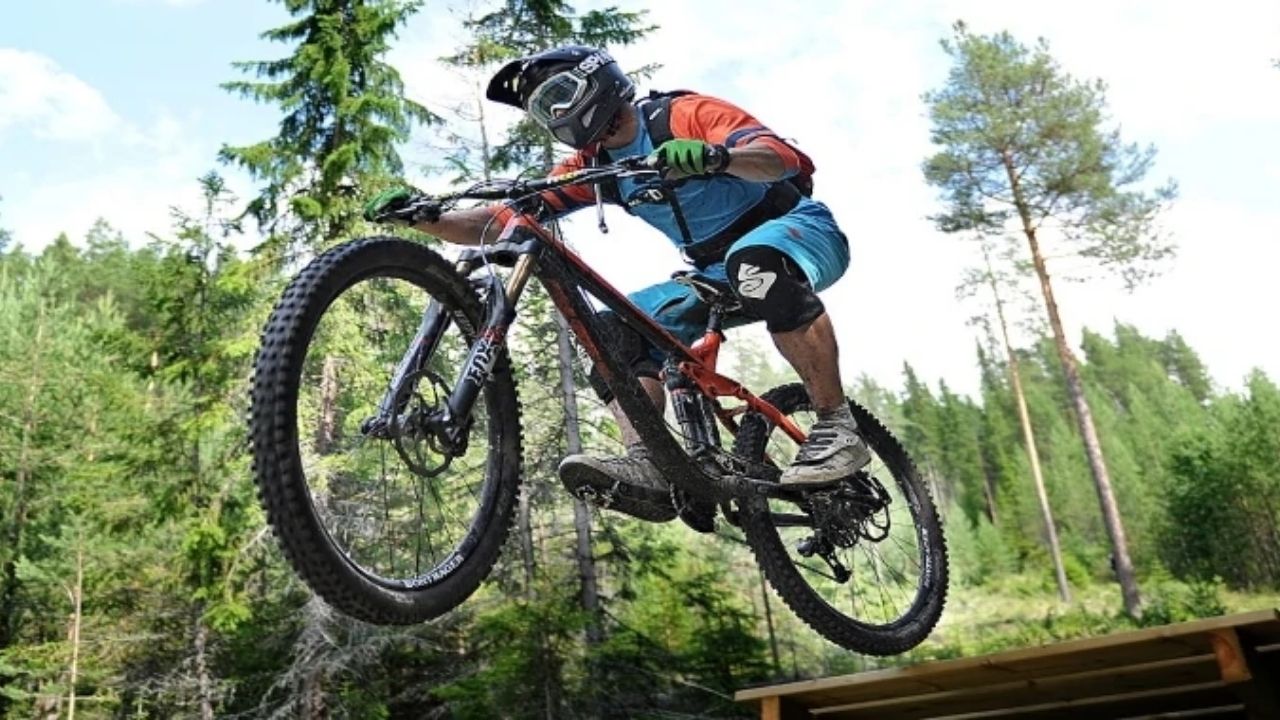Getting your mountain bike jump right is integral to optimizing the value you derive from the sport. A mountain bike jump is not only exhilarating but also increasingly becoming a prominent feature of trail riding. It is a fun yet valuable skill to have as an avid mountain biker.
Despite the developments in bike technology and the resulting popularity of jumping as an MTB technique, many riders still have difficulty with this skill. Here are some tips you can follow to improve your mountain bike jumps.
Page Contents
Get the Basics Right
Before you learn to jump, you must master some necessary skills on level terrain, including the front wheel lift, the rear wheel lift, and the level lift. You should also be comfortable with the “bunny hop,” which involves lifting the front wheel before springing up and scooping the rear wheel.

Once you can perform these maneuvers, you can start working on single jumps. Before attempting a jump, do a walk-through of the commitment zone, transition, face, lip, and landing. Ride slowly over the jump while absorbing the lip with your legs.
Ride over the jump a few times first, all the while increasing your speed incrementally each time. Doing so should give you an idea of the best approach and optimal landing position. Visualizing yourself completing the jump should also build confidence and help you envision the correct jumping form.
Positioning and Take-Off
To position yourself for the jump, ride towards it while maintaining a high ready position. In the transition, press down evenly with both your feet into pedals. When you reach the point of commitment, stop pedaling—don’t brake—and stay relaxed.
As you ride out of the point of commitment, keep your weight evenly centered over both wheels and lower your chest. Then, as you reach the face, start to compress forward with your elbows pointing outward and your knees bent. Compression refers to the act of throwing your weight forward, and you don’t need suspension on your mtb to successfully carry out this action.
When your front wheel reaches the lip, end the compression by straightening your legs and lifting your chest. Your front wheel will become airborne.
As your rear wheel comes closer to the lip, relax your arms and legs while maintaining an even weight between your front and rear wheel. The take-off phase of the jump is similar to the bunny hop.
Practice is crucial to ensure that you compress and decompress at the right moments and achieve maximum air.
Landing
Once you are airborne, keep your eyes on the spot where you want to land and start pushing your bike down to ensure optimal traction. When you land, your arms and legs should be relaxed enough to absorb the blow, but stable enough to maintain control over your bike.
If you are landing on downward sloping terrain, your front wheel should be lower than your rear wheel to ensure a smooth landing and optimal directional control. If your wheels are level during this maneuver, your rear wheel will touch the ground first, and the front wheel will slam into the ground, throwing your weight forward.
When landing on flat terrain, lean backward so that you land on your rear wheel. A landing on your front wheel will be too abrupt, and you may lose control of your bike.
Practice

Each jump is unique, and as you practice, you will develop an inherent ability to take on any jump. With sufficient practice, you will find it easier to time your compressions and maintain the correct position for each phase of the jump. Training is also crucial to ensure optimal airtime and coordinated landings, especially between take-offs.
Confidence is a crucial requirement to achieving a successful jump. If you are not confident, finding the power to push into the trail on your take-off can be a challenge. As a result, most of your effort will happen in the air, which is not ideal.
Ask a friend to film your jumps so you can analyze your technique. Compare your jumps with those of the pros to identify problem areas.
Enjoy Yourself
When practicing your mountain bike jumps, it can be easy to fixate on results and become frustrated. If you have a good time, however, it will be easier to progress naturally with your technique. You will also become confident and, over time, develop your own style.
